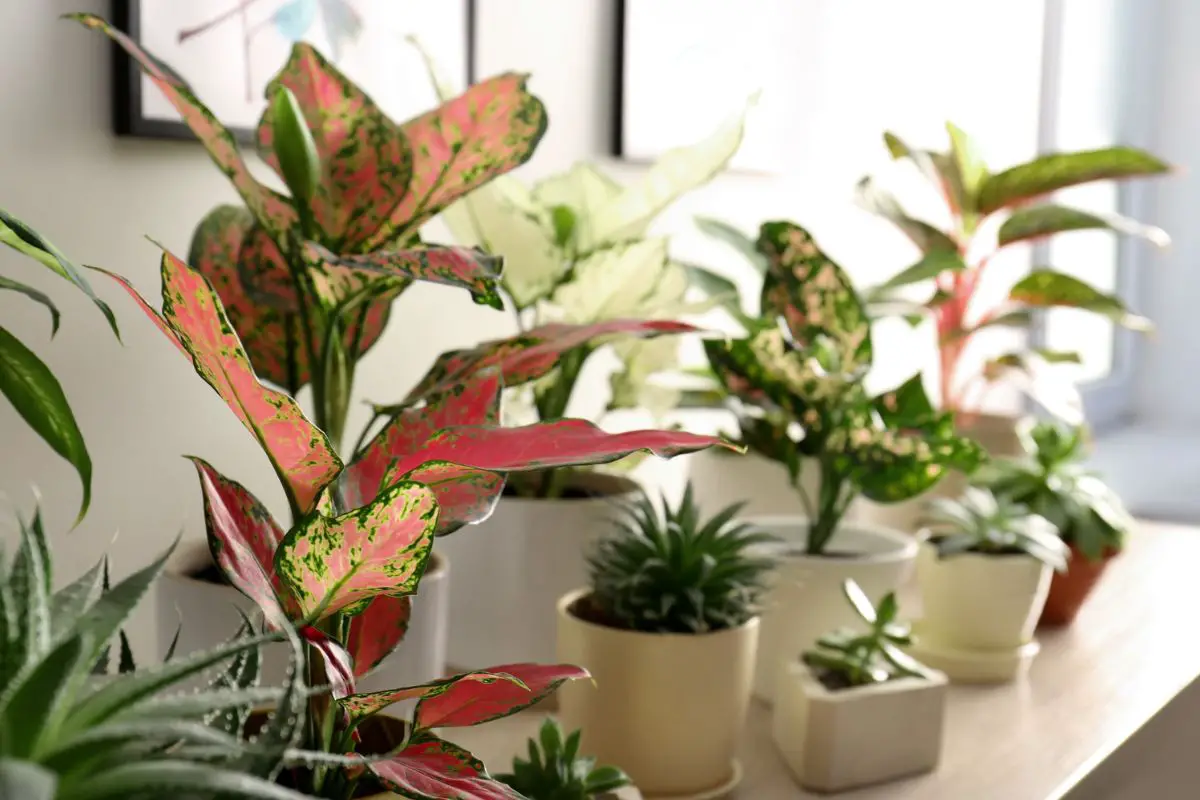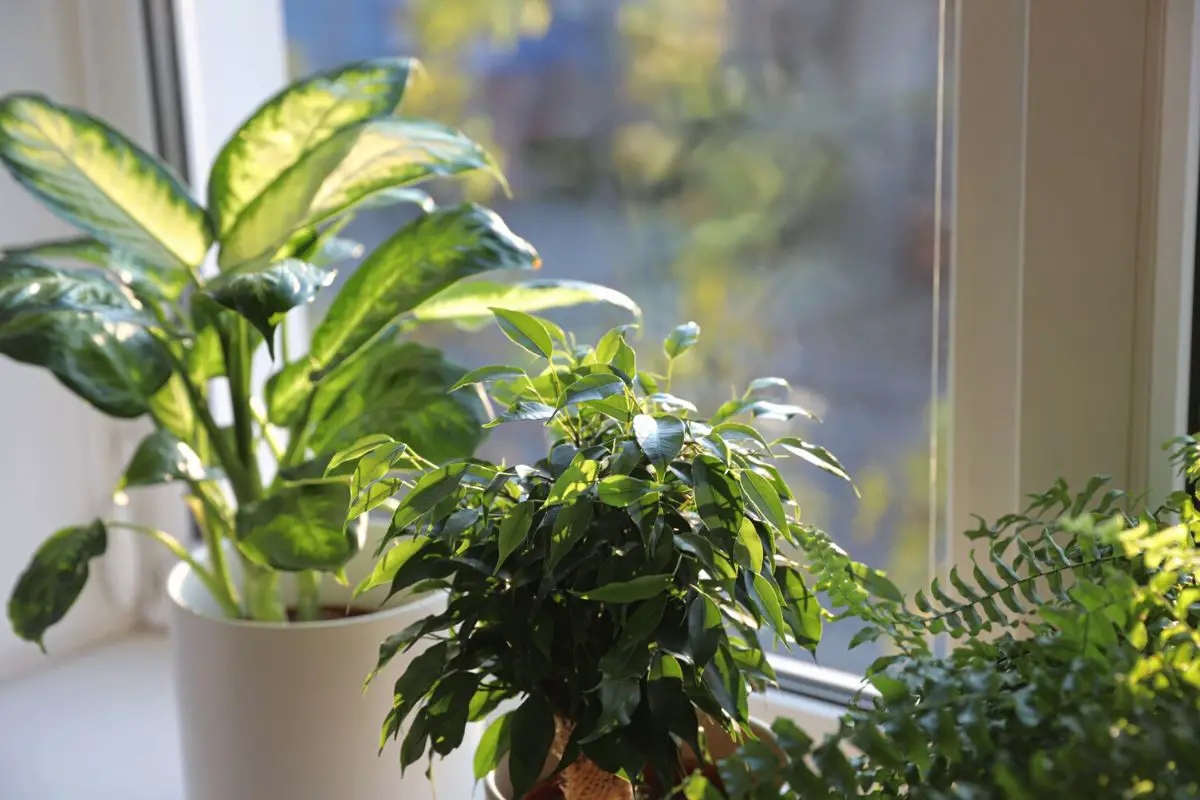All plants need sunlight to thrive. Although various plants require different light intensities and duration of exposure, light remains one of the most indispensable requirements for plant growth. However, adequate sunlight isn’t always accessible due to several factors, such as climate and location, making artificial light sources necessary.
You can use regular fluorescent lights to grow plants if you can’t get sufficient sunlight indoors. They emit less heat than other light sources and are less expensive. Also, many regular fluorescent lamps mainly emit blue light, which is essential for photosynthesis, respiration, and root growth.
This article will explore the pros and cons of using regular fluorescent lights to grow houseplants. I’ll also share how to use them to maximize their benefits and avoid problems. Read on!

Advantages of Using Fluorescent Lights
Grow lights are helpful devices for indoor gardens with limited access to natural light, especially during winter. However, they can be costly and impractical for novice gardeners with only a few indoor plants.
That’s why some gardeners wonder whether fluorescent lamps work as well as grow lights for growing plants.
Here are the benefits of using regular fluorescent lights for houseplants:
Emission of Blue Light
A regular fluorescent light emits more blue light than red light. Blue light efficiently facilitates photosynthesis and root development, making it suitable for most indoor plants.
Indoor plants are unlikely to produce flowers because the process involved in flower production requires sufficient natural light with adequate levels of red light. Foliage plants like pothos and philodendrons make excellent indoor plants because they can thrive on blue light.
Blue light also regulates the opening of the stomata to facilitate gas exchange between the leaves and the environment. This process is also crucial in fueling photosynthesis.
At adequate levels, blue light can also limit or slow down a plant’s elongation. This effect works best for gardeners who want to keep a more compact and bushier houseplant.
Reduced Heat
Fluorescent bulbs provide brighter light than incandescent bulbs while emitting significantly less heat, making them safer for your houseplants. This reduced heat generation results in lower electricity consumption and energy waste.
Too much heat may be dangerous for some types of houseplants that try to reach toward the light, as their leaves can get burned.
Lower Costs
Grow lights are specially designed for plant growth. Thus, they typically come with numerous adjustment settings to cater to various plants with different light requirements. These features make them relatively expensive.
Conversely, regular fluorescent lamps are often used as part of light fixtures in many homes and, therefore, are readily available. They also consume significantly less energy than incandescent bulbs and grow lights.
Lower wattage means lower electricity costs. Consequently, it also means lower brightness. Choosing a fluorescent lamp with this feature is acceptable because most indoor plants thrive in low to medium light.
However, it’s still best to understand your individual plant’s light needs and group them accordingly.
Disadvantages
Since they’re not specially designed for the purpose of growing plants, it’s essential to appreciate that using regular fluorescent lights in your indoor garden can present some disadvantages.
Being aware of these drawbacks can help you make necessary adjustments to maximize the benefits you can get from this artificial light source:
Inadequate Light Spectrum for Some Plants
Although you can find fluorescent lamps with higher wavelengths, most regular fluorescent lamps release a cool white rich in blue light. As discussed, this type of light is suitable for foliage plants but is not enough for fruiting or flowering plants.
If you want your plant to grow taller, blue light can negatively affect this, as it prevents plants from growing too tall.
You can choose warm white fluorescent lamps if you want to grow crops in your indoor garden. Alternatively, you can select a full-spectrum lamp that resembles natural light, albeit less intense. This kind of light will allow you to grow many plants with varied light needs in the same room.
The Expense of Dimming Features
Many regular fluorescent lights can be equipped with a dimming feature, making it easier to adjust the brightness depending on your plant’s needs.
However, this feature brings about the following drawbacks:
- It reduces your fluorescent lamp’s lifespan.
- It’s costly to install.
- It creates an unstable light supply as the lamp tends to flicker under this setting.
Best Practices for Using Fluorescent Lights in Indoor Gardening
Some environmental factors, such as the number of daylight hours in various seasons, are beyond our control. However, the beauty of growing plants indoors is that we can customize the space to suit every plant’s needs.
Although fluorescent lights can help grow plants inside your home, they’re not readily usable for this purpose as they are.
Here are some tips to help you design your indoor garden using fluorescent lights as the artificial light source:
1. Choose a Fluorescent Lamp Suitable for Your Plants
Numerous fluorescent lamps emitting light at varying wavelengths are available in the market. Choose a product that emits the appropriate wavelength for the type of plants you plan to grow in your indoor space.
Tubular ones have wide coverage and can reach multiple plants at the same time when placed high up. However, the light intensity decreases if the artificial light source is too far. As a result, the energy that reaches your plants diminishes and has a reduced effect on plant functions.
On the other hand, round-shaped lamps can be adjusted to focus on individual plants. Be sure to rotate your plant periodically to allow all the leaves to receive enough light and avoid legginess.
When choosing a fluorescent lamp for growing plants, you should consider the following:
Wattage
The higher the wattage of the fluorescent lamp, the farther it can be from your plants. This is due to the higher light intensity or brightness released by the lamp.
Shape
As we previously discussed, different lamp shapes cover varied distances and can reach varying numbers of plants.
Wavelength
The wavelength range indicates the kind of light the lamp produces. For instance, at around 400 nm, you get predominantly blue light. On the other hand, 700 nm will give you mainly red light.
Plant Type
If you want better chances of seeing your indoor plants fruit and flower, choose a fluorescent lamp along the 700-nm wavelength. It’s rich in red light that can help with the development of both fruits and flowers. Otherwise, a lamp with a wavelength of around 400 nm is better suited to foliage plants.

2. Keep the Light at a Safe Distance
Depending on the shape or design of your fluorescent lamp, your plants may be getting too much or too little light.
Adjust the position and distance of your lamp appropriately to provide enough light to your houseplants while avoiding burning their foliage. Although fluorescent light emits less heat than its incandescent counterparts, it can still burn your plants when placed too close.
Brighter light can be positioned farther away than dimmer light. You can refer to the wattage of your fluorescent lamp when deciding the distance. A good rule of thumb is to keep a 20-watt lamp at least 6 inches (15 cm) away from your plants with low-light requirements.
You can also refer to this article from the University of Missouri for the recommended light output levels depending on the type and distance of your light fixtures.
3. Group Your Plants Based on Lighting Needs
Various plant species have specific needs when it comes to lighting for optimal growth. However, you may find several plants that share similar light and humidity requirements, making it convenient to grow them in the same area in your indoor garden.
When grouping plants together, you’ll need to consider the following:
Light Intensity
Some plants need bright light even when growing indoors. In that case, you’ll need full-spectrum fluorescent lamps. On the other hand, some plants with low-light requirements can thrive under fluorescent lamps with lower wattage.
Duration of Exposure
Indoor plants need an artificial light source for a specific number of hours per day. For instance, plants that require 8 hours of bright natural light can do well with 16 hours of artificial light. Conversely, those needing 4 hours of natural light can thrive indoors with 8-12 hours of exposure to fluorescent light daily.
Age of Plants
Plants need varying light intensities and duration of exposure at different life stages. Group seedlings together and isolate them from mature plants with different lighting needs, as these can block their light source.
Final Thoughts
Regular fluorescent lights are excellent, low-cost alternatives to grow lights when it comes to growing indoor plants. They are less efficient than grow lights and natural light, but understanding and addressing these limitations will help you maximize their efficiency.







